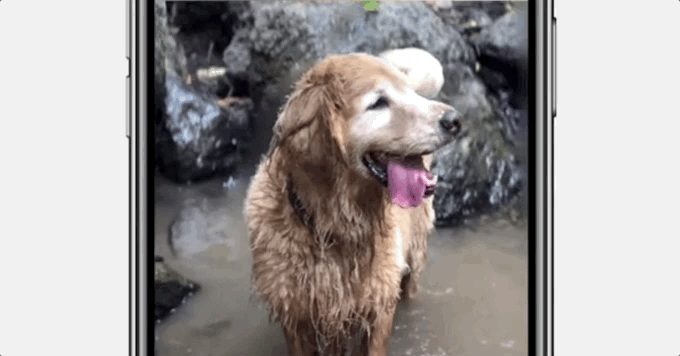What if you could peek behind what’s in your photos, like you’re moving your head to see what’s inside a window? That’s the futuristic promise of Facebook 3D photos. After announcing the feature at F8 in May, Facebook is now rolling out 3D photos to add make-believe depth to your iPhone portrait mode shots. Shoot one, tap the new 3D photos option in the status update composer, select a portrait mode photo and users on the desktop or mobile News Feed as well as in VR through Oculus Go’s browser or Firefox on Oculus Rift can tap/click and drag or move their head to see the photo’s depth. Everyone can now view 3D photos and the ability to create them will open to everyone in the coming weeks.
Facebook is constantly in search of ways to keep the News Feed interesting. What started with text and photos eventually expanded into videos and live broadcasts, and now to 360 photos and 3D photos. Facebook hopes if it’s the exclusive social media home for these new kinds of content, you’ll come back to explore and rack up some ad views in the meantime. Sometimes that means embracing mind-bending new formats like VR memories that recreate a scene in digital pointillism based on a photo.
So how exactly do 3D photos work? Our writer Devin Coldewey did a deep-dive earlier this year into how Facebook uses AI to stitch together real layers of the photo with what it infers should be there if you tilted your perspective. Since portrait mode fires off both of a phone’s cameras simultaneously, parallax differences can be used to recreate what’s behind the subject.
To create the best 3D photos with your iPhone 7+, 8+, X or XS (more phones will work with the feature in the future), Facebook recommends you keep your subject three to four feet away, and have things in the foreground and background. Distinct colors will make the layers separate better, and transparent or shiny objects like glass or plastic can throw off the AI.

Originally, the idea was to democratize the creation of VR content. But with headset penetration still relatively low, it’s the ability to display depth in the News Feed that will have the greatest impact for Facebook. In an era where Facebook’s cool is waning, hosting next-generation art forms could make it a must-visit property even as more of our socializing moves to Instagram.
